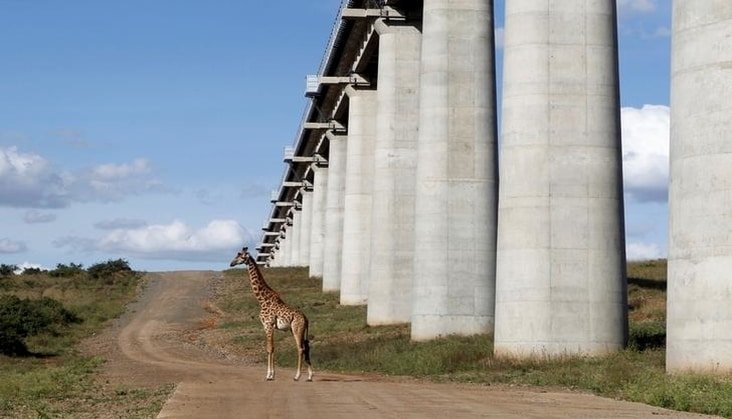A giraffe walks near the elevated railway line that allows movement of animals below the Standard Gauge Railway (SGR) line linking Nairobi and Naivasha inside the Nairobi national park in Nairobi, Kenya October 16, 2019. REUTERS/Njeri Mwangi Hassani sees 300kg per head, versus about 150kg now, as a realistic consumption target which would bring Kenya into line with North African countries. “We’ll get there for sure,” he says. Bamburi, majority owned by LafargeHolcim, is Kenya’s largest cement producer and trades on the Nairobi stock exchange.
Kenya needs cement to be able to take advantage of the opportunities arising from the Africa Continental Free Trade Agreement (AfCFTA). Exports such as flowers, tea and food need increased road, rail and port capacity . Housing will also drive cement demand: the International Finance Corporation estimates that Kenya has a housing shortfall of 2m units. “There’s a strong willingness now to develop infrastructure,” says Hassani.
Consumption of cement has the potential to triple over the next 15 to 20 years, he adds.
READ MORE South Africa: PPC hails lack of cheap imports for surge in cement sales
Demand up to 2016 was regularly posting double-digit growth rates, before being interrupted by the imposition of an interest-rate cap on banking lending, followed by an election year slowdown in 2017.
The cap, Hassani says, had the effect of making loans less rather than more affordable as banks were reluctant to lend to small business. The ending of the cap in late 2019 has contributed to this year’s strong if uneven demand, he argues.
Despite COVID-19, Kenya’s cement consumption increased by 11% in the first eight months of the year , according to the Kenya National Bureau of Statistics. The first quarter was “quite strong” for the industry, before a slowdown driven by the impact of COVID-19 on the global economy, says Hassani. Since July, there has been a recovery leading to levels of cement demand in Kenya similar to those seen before the pandemic, he adds. Overcapacity
Major Kenyan construction projects include the extension of Mombasa port, the building of the Coastline Transnational Highway from Malindi to Bagamoyo in Tanzania, and the Lamu Port and South Sudan Ethiopia Transport (LAPSSET) projects, designed to facilitate trade with South Sudan and Ethiopia. Kenya’s prospects have continued to attract new cement market entrants even as local prices have fallen. In October, Nairobi Business Ventures , formerly a shoe retailer, said it plans […]
